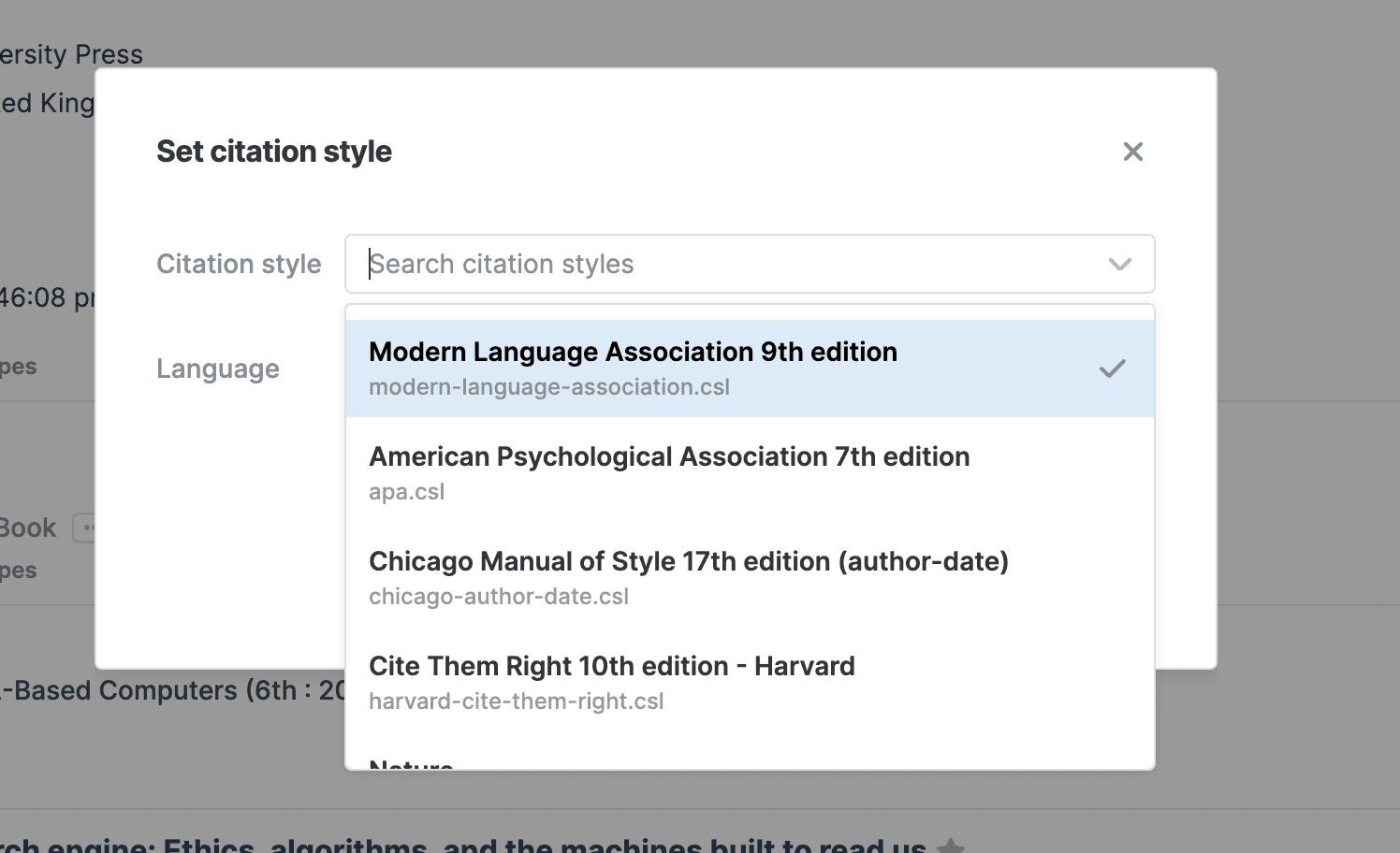Citations and citation styles
What are citations?
A citation is a way to give credit to the original source of information you used in your research paper. It provides essential details about the reference, such as the author, title, and publication date, so that readers can easily locate and verify the source themselves. Citing references is crucial because it not only acknowledges the work of others but also allows your readers to follow up on your research, check your sources, and further explore the topic.
In-text citations
An in-text citation is a brief reference within the body of your paper that points to a source listed in your bibliography or reference list. It typically includes the author’s name and the publication year, allowing readers to identify the source of a specific idea or quote.
The exact layout of an in-text citation depends on the citation style used. In APA, for example, there are parenthetical and narrative citations. Here are examples:
Parenthetical citation:
Recent studies indicate a strong correlation between climate change and bumblebee population declines (Smith & Brown, 2023).
Narrative citation:
Smith and Brown (2023) demonstrated that climate change has a significant impact on bumblebee populations.
In Paperpile, you can add multiple references to the same in-text citation to create a citation group.
Bibliography
A bibliography is a list of all the sources you consulted or cited in your research paper, usually found at the end of the document. Each in-text citation corresponds to a full entry in the bibliography, providing complete details like the author, title, and publication information. This connection allows readers to locate the original sources referenced throughout your paper.
Citations in footnotes and endnotes
Footnotes appear at the bottom of the page for immediate reference, while endnotes are collected at the end of a chapter or document, keeping the main text cleaner but less accessible.
Google Docs currently doesn’t support endnotes but only footnotes. You can add footnotes via a document command, and then Paperpile inserts the citation directly in that footnote.
In the Word plugin, both footnotes and endnotes can be added and formatted automatically by us.
Citation keys and unformatted placeholder citations
Sometimes, reference managers like Paperpile don’t insert the final formatted citation immediately; instead, it’s a two-step process. First, you insert citation keys, and then the final citation is formatted. For example, when writing in LaTeX, you would enter \cite{gruber2012}, and the BibTeX program uses this citation key to look up and correctly format the reference, such as [Gruber 2012].
Similarly, the Paperpile Google Docs plugin initially inserts blue “placeholders,” which are converted to their final form when you choose to "format references."
Citation styles
In-text citations can appear in different formats, such as (Gruber et al., 2012) or simply [1], depending on the citation style used. Similarly, bibliographies vary greatly depending on the field, journal, or country. Here’s a quick list of some main citation styles, categorized by format:
- APA: Author-date style (e.g., Gruber et al., 2012)
- Chicago: Author-date style (e.g., Gruber et al., 2012)
- MLA: Author-page style (e.g., Gruber 123)
- Vancouver: Numerical style (e.g., [1])
But it’s not just these four styles—there are countless variations, and literally thousands of different ways to format citations. Fortunately, you don’t need to worry about the specifics; you can let Paperpile handle it for you.
With Paperpile, you can choose from a wide range of citation styles. A citation style is a set of rules dictating how your in-text citations and bibliography should be formatted. Each citation style follows specific guidelines, such as those set by the CMS, APA, or the “instructions to authors” of different journals.

Paperpile supports Citation Style Language (CSL), which is an open standard for defining citation styles. This allows Paperpile to offer over 8,000 citation styles out of the box. If none of these meet your needs, you can create and upload your own CSL file with custom formatting rules.
Where to go from here?
- Find out what citation style you (or your professor) want
- Set the citation style
- Insert citations with Word or Google Docs